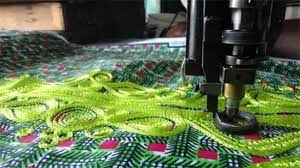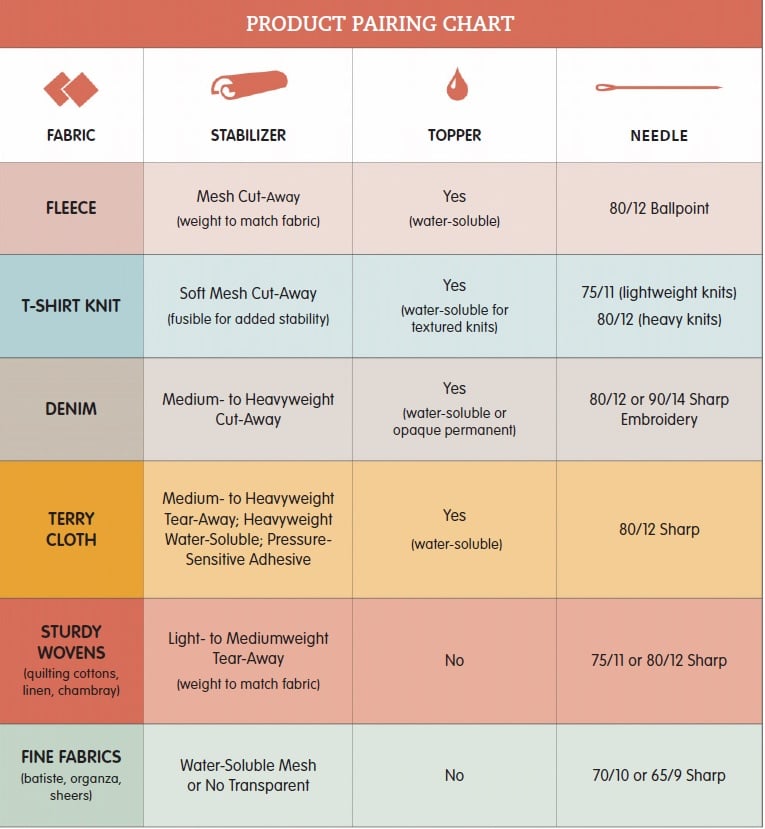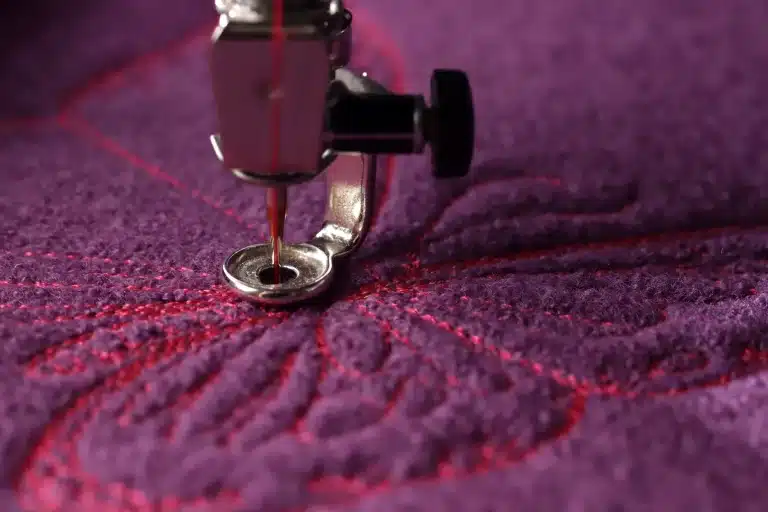Embroidery Techniques for Beginners
Embroidery is a beautiful and versatile craft that can be enjoyed by people of all ages and skill levels. There are many different embroidery techniques that can be used to create unique and personalized projects.
In this blog post, we will discuss some of the most common embroidery techniques, as well as provide links to free embroidery patterns and tutorials.
Basic Embroidery Techniques
Here are some of the most common embroidery techniques:
- Cross-stitch: This is a basic embroidery technique that involves making small, diagonal stitches in a cross pattern to create a design.
Crossstitch embroidery technique
- Satin stitch: This technique involves filling in a shape with long, straight stitches to create a smooth, satin-like finish.
- Chain stitch: This technique involves creating a series of looped stitches that are connected to form a decorative line or pattern.
Chain stitch embroidery technique
- French knot: This technique involves wrapping the thread around the needle a few times and then pulling the needle through the fabric to create a small, knotted stitch.
French knot embroidery technique
- Backstitch: This technique involves making small, evenly spaced stitches that are worked in the opposite direction to create a solid line or outline.
Backstitch embroidery technique
- Split stitch: This technique involves splitting the thread of the previous stitch as you work the next stitch to create a decorative line or pattern.
Split stitch embroidery technique
- Lazy daisy stitch: This technique involves making a small loop of thread and securing it in place with a small stitch to create a decorative flower-like design.
Lazy daisy stitch embroidery technique
These are just a few of the many embroidery techniques that are available. With practice and experimentation, you can learn to master any of these techniques and create beautiful embroidered projects.
Additional Tips
Here are a few additional tips for beginners:
- Start with a simple project. Don’t try to tackle too much too soon. Start with a simple project that uses a few basic stitches.
- Use high-quality materials. This will make your project easier to sew and more enjoyable to work on.
- Be patient. Embroidery takes time and practice. Don’t get discouraged if you don’t get perfect results right away.
- Have fun! Embroidery is a fun and rewarding hobby. Enjoy the process of creating something beautiful with your own hands.
Free Embroidery Books
Here are 3 free embroidery books in pdf on more traditional embroidery but the basics remain the basics you will find many tips and techniques:
Please let me know if you have any questions.
Thank you for reading!
Question: I'm interested in learning embroidery, but I'm a complete beginner.
Embroidery is a fun and relaxing craft that’s perfect for beginners! There are just a few basic stitches you’ll need to learn to create beautiful designs. Here are some essential techniques to get you started:
1. Mastering the Basic Stitches:
- Backstitch: This versatile stitch is great for outlines and filling small areas. It’s made by stitching backwards with small, even stitches.
- Running Stitch: This simple stitch is perfect for straight lines or lettering. It’s a basic forward and back stitch through the fabric.
- Stem Stitch: This stitch is ideal for creating stems and outlines. It creates a long, skinny line with diagonal stitches.
2. Learning Additional Beginner Stitches:
Once you’ve mastered the basics, you can try some fun and decorative stitches:
- French Knot: This stitch adds a small textured dot to your design.
- Lazy Daisy Stitch: This cheerful stitch creates a daisy-like flower.
- Satin Stitch: This stitch creates a smooth, solid filled area.
3. Resources for Learning:
There are many resources available to help you learn embroidery stitches. Here are a couple of suggestions:
- Online tutorials: Many websites and YouTube channels offer free video tutorials on embroidery stitches. Search for “hand embroidery stitches for beginners” to find detailed instructions.
- Embroidery books and kits: Local craft stores often carry beginner embroidery kits that include fabric, thread, a hoop, and instructions for specific stitches.
I've learned some basic stitches and I'm itching to start a project! What are some good ideas for beginner embroidery projects?
That’s exciting! Once you’ve mastered a few stitches, there are tons of fun and achievable projects for beginners. Here are some ideas to get you started:
-
Embroidered lettering: This is a classic project that allows you to practice your stitches while creating something personalized. You could embroider your initials on a tote bag, a pillowcase, or a piece of clothing.
-
Simple floral motifs: Flowers are a popular theme in embroidery, and there are many beginner-friendly designs you can try. Start with small, simple flowers like daisies or forget-me-nots, using stitches like the lazy daisy stitch and french knots.
-
Geometric patterns: Geometric shapes are another great option for beginners. You can create simple patterns using straight stitches, back stitches, and satin stitches. This is a great project to experiment with different colors and thread weights.
-
Embroidered hoops: You can use embroidery hoops themselves as mini canvases for your art! Try stitching a small landscape or a cute animal portrait within the hoop.
-
Embroidered patches: Create small, stitched designs that you can iron onto clothing, bags, or hats for a personalized touch.
I'm getting the hang of embroidery and I'm interested in trying some more advanced techniques. What are some next steps I can take to improve my skills?
Congratulations on your embroidery progress! Now that you’re comfortable with the basics, it’s time to expand your skillset and explore some more advanced techniques. Here are some ways to take your embroidery to the next level:
- Master new stitches: There are countless beautiful and versatile embroidery stitches waiting to be discovered. Explore stitches like:
- Bullion stitch: Creates a textured, 3D rope-like effect.
- Crickets stitch: Creates a textured surface that resembles crickets’ backs.
- Satin stitch variations: Learn different ways to manipulate the satin stitch to create shading and different textures.
- Shading and color blending: Take your embroidery to a new dimension by learning how to use different thread colors to create shading and depth. This can be achieved through techniques like long and short stitch or by using multiple strands of floss together.
- Transferring patterns: Once you’re comfortable, you can move beyond pre-printed patterns and try transferring your own designs onto fabric. There are several methods for this, such as using heat transfer paper or lightboxes.
- Embroidery on different fabrics: Experiment with stitching on different types of fabrics, like linen, silk, or denim. Each fabric has its own unique properties that will affect the way your stitches look.
- Surface embellishments: Add another layer of interest to your work by incorporating beads, sequins, buttons, or other embellishments into your embroidery.
Additional Resources for Embroidery Enthusiasts:
- Embroidery books and magazines: There are many resources available that showcase advanced embroidery techniques, patterns, and inspiration.
- Online embroidery courses: Many websites and online platforms offer paid embroidery courses that delve deeper into specific techniques and styles.
- Embroidery communities: Join online embroidery communities or forums to connect with other stitchers, share your work, and get feedback and inspiration.
By continuing to learn new techniques and experiment with different materials, you’ll keep your embroidery journey fresh and exciting!
Related Posts
Discover relevant articles, tutorials, and tips to improve your skills and explore new techniques.
Stay inspired and connected to our embroidery community.







I really like your blog.. very nice colors & theme. Did you create this website yourself or did you
hire someone to do it for you? Plz answer back as I’m looking to
create my own blog and would like to know where u
got this from. appreciate it
If you want to grow your knowledge only keep visiting this web site and be updated with the hottest information posted here.
After looking into a few of the articles on your web site,
I seriously like your way of blogging. I saved as a favorite it to my bookmark website list and will be checking back soon.
Take a look at my web site too and let me know your
opinion.
Wow, incredible weblog format! How long have you been running a blog for?
you make running a blog glance easy. The full look of your
website is excellent, as well as the content material!
These are in fact great ideas in regarding blogging. You have touched some nice points here.
Any way keep up wrinting.
As a former hand stitch embroidery person who now has switched to machine stitch, can a stamped print or pattern for hand, be copied and switched to a machine embroidery?